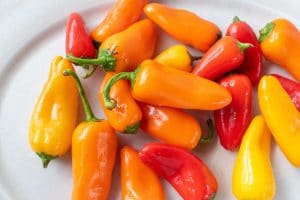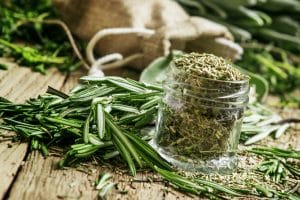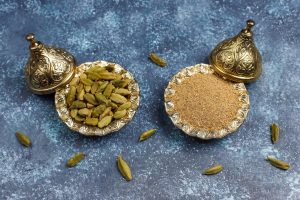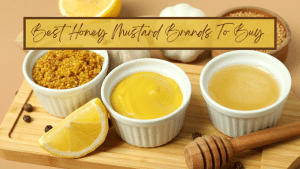Thyme vs. Oregano: What’s The Difference?
Important Note: When you buy through our links, we may earn a commission. As an Amazon Associate we earn from qualifying purchases. Content, pricing, offers and availability are subject to change at any time - more info.
In the debate of thyme vs. oregano, both originated in Mediterranean regions and are considered essential herbs in Mediterranean recipes and many other cuisines. Whether you’re a beginner cook or have a lot of experience, you may have questions about these herbs; do they look the same? What are the differences?
The difference between thyme and oregano lies in their flavor and aroma. Thyme has a complex combination of sweet, peppery, minty, and lemony flavor, whereas oregano has a bold, intense, and earthy flavor. Both are extremely tasteful and healthy options to add to any dish.
If you are unsure about the difference between the two popular herbs or how you can use them in cooking, I’ll answer those questions and more below in this post. Keep on reading to learn more about thyme vs. oregano.
Thyme vs. Oregano
Before getting directly into the differences, let’s just look at what Thyme and Oregano are exactly.
What Is Thyme?
Thyme is a popular herb used in several different cuisines all over the world. Two main types of thyme are: common and lemon. Common thyme is, as its name indicates, the most commonly used form of thyme.
It is a perennial herb from the Genus “Thymus” and a large herb family of mint known as “Lamiaceae.” Interestingly, they also relate to the genus to which oregano belongs. These facts about the plant give a good indication of the flavor profile of thyme, and you can have an idea of what it may taste like and be used for.
Thyme has a very unique, fresh, earthy, and almost floral taste. It tastes similar to rosemary and is compared to the likes of lavender. Ancient Egyptians and Romans started using it for flavoring cheese and wine. It became the most popular culinary herb, being used in various cuisines all over the world.
Thyme is not always used for culinary purposes. There are only two types used for this purpose, most commonly, i.e., common thyme and lemon thyme. Other types of thyme are used mainly as decorative border plants, and they give off a wonderful aroma and attract bees.
Thyme has been used for culinary and medical purposes for a long time. It is said that thyme was used for embalming in ancient times, probably due to its cleansing properties.
You can buy thyme both as fresh and dried. You can also grow it in your kitchen garden or windowsill herb box very quickly. It tastes similar in both forms, whether it is dried or fresh.
What Is Oregano?
Oregano also belongs to the Lamiaceae family, just like thyme. Its Genus is Origanum. It’s a flowering plant found in the Mediterranean area.
Oregano has long been used for culinary as well as medicinal purposes. It is popular in Mediterranean cooking, especially in Italian cuisines. It’s a vital ingredient in many Italian pasta dishes Italian Herb mixes.
This herb is very closely related to another herb known as marjoram. For this reason, oregano is known by another name, ‘sweet marjoram,’ so don’t wonder, if you ever hear that, you can just think of oregano.
Oregano (or sweet marjoram) is similar to thyme because it has a distinctive and fresh flavor. On the other hand, it is pretty intense and is reminiscent of grass and hay. However, don’t just let that off you because its sweet and woody tinge makes it a flavor sensation.
Oregano is also available in both dried and fresh forms. You can even purchase it in ground/powder form. Dried oregano has a comparatively more pungent taste than fresh oregano and is a common ingredient in many pantries. If you crush the dried oregano even further, you will realize that it releases even more flavor.
Differences Between Thyme And Oregano
Following are some differences between thyme and oregano based on some of their characteristics:
Perceptual And Sensory Differences Between Thyme And Oregano
Keeping in view that both the herbs come from the same family, it would necessarily mean they share some similar properties. Though the regional varieties differ in some aspects, this is a general overview of the differences between standard types of both herbs.
Here’s a table to list down the differences in the appearance of both herbs:
| Thyme | Oregano |
| Leaves are green to grayish-green and very tiny (2mm at most) | Leaves are vibrant green and spade-shaped |
| The plant can grow 6-12 inches tall and up to 18 inches wide | The plant grows to 1-3 ft. tall and 2-4 ft wide |
| Stems are soft at the top where young shoots grow but stiff and woody at the bottom | Stems are hairy when young but later on become woody with age |
| Flowers come in white to lilac color | Flowers come in white, pink, light purple color |
| Bloom in early to Midsummer | Bloom in the Summer |
The taste of oregano can be described as spicy, peppery, pungent, astringent, sharp, or bitter, depending on the type of oregano.
Thyme’s taste is comparatively gentle, lemony, slightly minty, subtle, and “dry”; dependent on the type of thyme you have.
Oregano is often described to have a spicy and peppery smell, while thyme has a very aromatic and woody aroma that vaguely reminds of rosemary.
Pro-tip: Healthy thyme leaves a strong smell that lasts a few seconds once you rub its leaves with your fingers. This doesn’t happen with oregano.
Difference In The Nutritional Value Of Thyme And Oregano
The difference in nutritional value and properties depends on the plant. The drying process also affects the nutritional value of herbs. In some cases, the drying process increases and empowers these properties, while in other cases, properties are toned down in exchange for longer storage life.
Stating that both the plants belong to the same plant family, they share almost the same nutritional values except a few minor differences. The nutritional value of fresh oregano is nearly the same as dried one in all aspects. In comparison, fresh versus dried thyme shows some exciting results as the dried thyme is more nutritious than the fresh thyme.
A basic nutritional profile of thyme and oregano can be found in the table given below.
| Plant Properties | Oregano (Dried, 1 g) | Oregano (Fresh, 1 g) | Thyme (Dried, 1 g) | Thyme (Fresh, 1 g) |
| Calories | 2.7 | 2.7 | 2.8 | 1 |
| Fat | 0 g | 0 g | 0.1 g | 0 g |
| Sodium | 0.3 mg | 0.25 mg | 0.5 mg | 0.1 mg |
| Protein | 0.1 g | 0.1 g | 0.1 g | 0.1 g |
| Total Carbohydrates | 0.7 g | 0.689 g | 0.6 g | 0.2 g |
| Vitamin D | 0 g | 0 g | 0 g | 0 g |
| Calcium | 15.97 mg | 15.97 mg | 18.9 mg | 4.05 mg |
| Iron | 0.368 mg | 0.37 mg | 1.24 mg | 0.1745 mg |
| Potassium | 13 mg | 12.6 mg | 8.1 mg | 6.1 mg |
To summarize, while sharing some similarities, thyme and oregano are both very distinctive herbs with differences in flavors. Though they are used in place of each other in many different recipes, it should also be noted that their flavors are slightly different, and so you may not get the same results.
Thyme and oregano also work incredibly together and are important components of Italian Seasonings. Both are terrific herbs to add to your pantry repertoire and can be grown easily in your garden if you are that way inclined.























